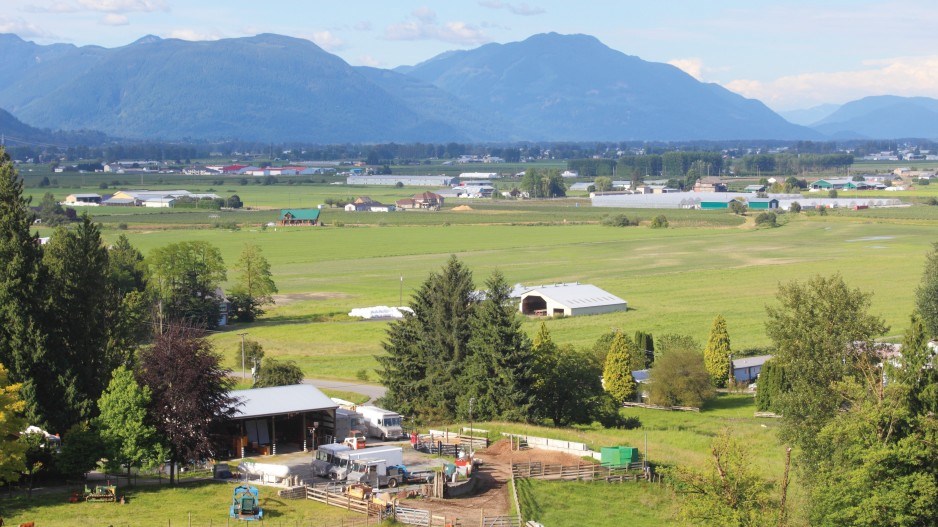Greener pastures?
Metro Vancouver’s industrial land shortage is well known, and the Fraser Valley is often seen as a place of greener pastures for development.
But there’s a shortage of industrial land there, too, according to Abbotsford city staff.
Two years ago, staff identified 1,700 acres of developable land out of a total industrial land base of 3,550 acres. Today, the best estimate of readily available, developable industrial land is less than 100 acres.
“Today, at the rate that we are using up the serviced industrial lands, our staff are telling us that in between three to five years we’ll be out of serviced industrial land,” Abbotsford Mayor Henry Braun said.
Of 445 acres extracted from the Agricultural Land Reserve (ALR) in 2005 as part of Abbotsford’s City in the Country plan, 75% is on track for development.
“You’re going to see buildings going up pretty quick,” Braun said.
Rezonings are running at 22 acres a year for two to three years, with 2015 marking a record.
“Since the beginning of the year, approximately 55 to 60 acres of designated industrial land has either been sold or put under agreement in the city,” said Kyle Dodman, an industrial specialist with Frontline Real Estate Services Ltd. “Parcels … passed over by developers all of a sudden became sought after, with multiple user groups writing offers for either purchase or build-to-suits with the current land owners.”
Dodman reckons that Abbotsford has just 50 acres of readily available developable industrial land left.
The city’s new Official Community Plan, adopted June 27, identifies two special study areas for future industrial growth, comprising 690 acres of land. However, these areas remain within the ALR.
Abbotsford staff plan to study the city’s industrial lands this fall, “to fully quantify Abbotsford’s industrial inventory and specifically examine the two special study areas for future growth,” a statement from the city said.
Supply or incomes?
Writers are human, too; they live in neighbourhoods, vote and pay taxes.
So, when the City of Vancouver announced plans for 400 new social housing units last week (including some just down the street from yours truly), it prompted question: When did the city consult local residents?
Well, it hasn’t. The city has yet to file rezoning and development permit applications for the four sites, meaning construction won’t begin any earlier than 2018.
Still, the announcement was a good news story, as the city pursues what Mayor Gregor Robertson and chief housing officer Mukhtar Latif termed “deeper affordability” for family-sized units that will run from $1,000 to $2,000 a month.
But what, asked another reporter, does that level of affordability mean for singles who pay that much for a Yaletown studio?
The mayor lent a sympathetic ear, but there were no simple answers. While there’s been a lot of talk about the relationship between home ownership costs versus local incomes, there’s been less regarding the relationship between rents and local incomes, which average among the lowest in the country.
The maximum rents Vancouver sets for purpose-built rental units developed on sites on which the city has waived development cost levies (DCLs) reflect a calculation that doesn’t factor in incomes.
Rather, according to the city’s “rental incentive guidelines,” maximum DCL rents “are the average rents for all residential units built since the year 2005 in the city of Vancouver as published by CMHC in the Fall 2015 Rental Market Report.” (“Affordable” rents for units on the west side come at a 10% premium to those on the east side.)
While added supply may make a difference, new stock that cost more to build simply can’t compete on price with existing units with an average age of approximately 60 years. And city calculations that link affordability not to local incomes but historical rents reflecting increasingly expensive units don’t help put market units within reach of cash-strapped tenants.




